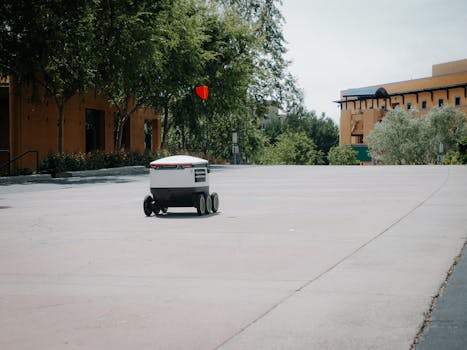
Smart Cities: Urban Trends for 2025
Focus Keyword: Smart Cities
Smart Cities are revolutionizing the way we live, work, and interact with our environment. As we approach 2025, it’s essential to explore the latest urban trends that will shape the future of our cities. From sustainable energy to innovative transportation systems, we’ll delve into the most significant developments that will impact the quality of life for citizens.
Section 1: Sustainable Energy and Environment
One of the primary concerns for smart cities is reducing their carbon footprint and promoting sustainable energy sources. In 2025, we can expect to see a significant increase in the adoption of renewable energy sources such as solar, wind, and hydroelectric power. Additionally, cities will invest in energy-efficient infrastructure, including smart grids and green buildings.
Another crucial aspect of sustainable cities is waste management. With the help of advanced technologies like IoT sensors and data analytics, cities can optimize their waste collection and recycling processes, reducing the amount of waste sent to landfills and minimizing environmental pollution.
Section 2: Innovative Transportation Systems
The way we move around cities is undergoing a significant transformation. Electric and self-driving vehicles are becoming increasingly popular, reducing congestion and emissions. In 2025, we can expect to see more cities investing in smart transportation systems, including advanced public transit networks and bike-sharing programs.
Furthermore, the integration of hyperloop systems and high-speed rail will revolutionize long-distance travel, reducing travel times and increasing connectivity between cities. With the help of advanced data analytics and AI, cities can optimize their transportation networks, reducing congestion and improving the overall travel experience.
Section 3: Smart Infrastructure and Buildings
Smart cities rely on intelligent infrastructure and buildings to provide citizens with a high quality of life. In 2025, we can expect to see a significant increase in the adoption of smart building technologies, including energy-efficient systems, advanced security features, and integrated IoT sensors.
Additionally, cities will invest in smart infrastructure, such as intelligent streetlights, smart parking systems, and advanced water management systems. These technologies will not only improve the efficiency of city operations but also provide citizens with a safer and more convenient living environment.
Section 4: Data Analytics and Citizen Engagement
Data analytics plays a vital role in the development of smart cities. By analyzing data from various sources, cities can gain valuable insights into citizen behavior, traffic patterns, and energy consumption. In 2025, we can expect to see more cities investing in data analytics platforms and AI-powered tools to optimize city operations and improve decision-making.
Citizen engagement is also crucial for the success of smart cities. In 2025, we can expect to see more cities investing in digital platforms and mobile apps that allow citizens to participate in the decision-making process, report issues, and access city services. This will not only improve the overall citizen experience but also increase transparency and accountability.
Section 5: Conclusion and Future Outlook
In conclusion, the future of smart cities looks promising, with a focus on sustainable energy, innovative transportation systems, smart infrastructure, and data analytics. As we approach 2025, it’s essential for cities to invest in these technologies and trends to improve the quality of life for citizens and create a more sustainable and livable environment.
As technology continues to evolve, we can expect to see even more exciting developments in the field of smart cities. From autonomous vehicles to virtual reality, the possibilities are endless. One thing is certain – the future of smart cities will be shaped by the innovative ideas and technologies that we invest in today.




